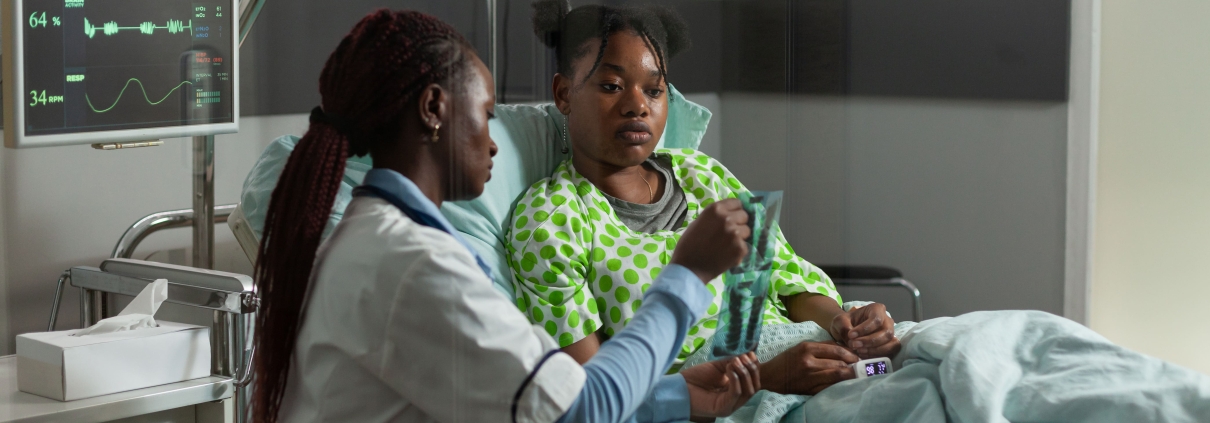Most Common Reasons For Uterine Fibroid Embolisation Failure Explained
What Causes Uterine Fibroid Embolisation Failure?
Uterine fibroid embolisation failure mainly happens when not all fibroids are successfully blocked from receiving blood. Since the treatment works by cutting off their blood flow, even a small remnant can continue to cause symptoms like pain or heavy bleeding. One of the main reasons for this failure is incomplete embolisation—when some fibroids, especially smaller or deeply embedded ones, don’t get treated during the procedure.
Another factor in uterine fibroid embolisation failure is when fibroids receive blood from alternative sources, like the ovarian arteries. If this extra supply isn’t identified before treatment, it may keep the fibroids alive. This issue is more common than people expect and can make it seem as if the treatment didn’t work.
Understanding Recanalisation and Uterine Fibroid Embolisation Failure
Recanalisation is when previously blocked arteries reopen, bringing blood back to fibroids. This can undo the intended effects of embolisation. Sometimes, the arteries heal in a way that allows fibroid regrowth, and symptoms such as pressure or discomfort return. In other cases, short-term relief may fade, leading patients to believe the treatment hasn’t worked.
Additionally, arterial spasms during the procedure can lead to false appearances of success, only for recanalisation to occur weeks or months later. This makes follow-up and accurate imaging essential to truly assess outcomes.
The Role of Adenomyosis in Uterine Fibroid Embolisation Failure
Some patients diagnosed solely with fibroids may also have adenomyosis—a condition that affects the uterine tissue itself. If missed before embolisation, this hidden cause of ongoing bleeding or cramps can lead to uterine fibroid embolisation failure and side effects. The symptoms may persist even though the fibroids have shrunk.
Adenomyosis often mimics fibroid symptoms but requires a different approach. That’s why it’s important to get detailed imaging beforehand. Catching this issue early can change treatment plans and improve symptom management.
Difficult Fibroid Types and Surgical History as Risk Factors
Pedunculated fibroids—those attached by a stalk—are harder to treat through embolisation. They don’t always respond well, which can lead to uterine fibroid embolisation failure. These types may even disappear from the uterus and move elsewhere, potentially causing side effects.
A history of surgery, like a previous myomectomy, may also interfere with UFE results. Scar tissue from earlier procedures can distort blood flow and limit how well the fibroids respond. This can prevent the complete shutdown of blood supply, leaving parts of fibroids functioning or slowly regrowing.
How to Reduce the Risk of Uterine Fibroid Embolisation Failure
Preventing uterine fibroid embolisation failure begins with an accurate diagnosis and excellent imaging. Before treatment, it’s important to identify all fibroids and confirm if any are receiving blood from extra sources like the ovarian arteries. A clear picture of the uterus helps specialists plan better and target everything properly the first time.
Close follow-up and consistent evaluation after the procedure also matter. If symptoms come back or linger, early signs of failure can often be managed with additional care. Working with an experienced team greatly improves the chances of long-term success.
Visit: How Successful Is Uterine Fibroid Embolisation? To read more about UFE success rates.
Understanding Uterine Fibroid Embolisation Failure
Uterine fibroid embolisation failure can occur for several reasons, and knowing what they are helps people make more informed treatment decisions. Even though the procedure is often effective, some fibroids may continue to grow or cause symptoms if they still receive blood. This is one of the most common causes of failure — when the blood supply isn’t fully blocked, the fibroids can survive.
Another reason is the reopening of treated blood vessels. Over time, these vessels might naturally restore their flow, which can undo some of the effects of the procedure. In other cases, the particles used during embolisation may not reach the right area. This happens if the arteries spasm during treatment or if the embolic material mistakenly travels to nearby organs.
Incomplete Treatment and Uterine Fibroid Embolisation Failure
Incomplete embolisation is a major contributor to uterine fibroid embolisation failure. If every fibroid isn’t properly targeted, symptoms like heavy bleeding or pelvic pressure might not go away. This is especially true if fibroids are fed by different blood vessels, such as the ovarian arteries, which can be easily missed during the procedure. Without blocking these additional sources, fibroids can continue to receive blood and grow.
Blood Vessel Reopening and Its Role in Uterine Fibroid Embolisation Failure
Recanalisation, or the natural reopening of treated vessels, can also lead to uterine fibroid embolisation failure. It means that even after a successful procedure, some vessels might start flowing again, giving fibroids a second chance to survive. While this doesn’t happen to everyone, it’s one reason why follow-up scans are important. Keeping an eye on how the uterus responds can help detect issues early.
Ovarian Blood Supply and Other Challenges
Another challenge arises when fibroids get blood from sources not originally targeted, like the ovarian arteries. If these aren’t treated during the procedure, the fibroids may not shrink as expected, leading to uterine fibroid embolisation failure. There’s also a risk that particles accidentally reach areas like the ovaries, which can affect fertility or cause other complications.
Knowing why uterine fibroid embolisation failure happens helps patients understand what to look out for after treatment. Whether it’s due to overlooked vessels, incomplete embolisation, or changes in the body’s response, staying informed can make a big difference in treatment outcomes.
Ready to Navigate Uterine Fibroid Embolisation Challenges?
Understanding the complexities of uterine fibroid embolisation failure is crucial for making informed decisions about your health. With a comprehensive diagnosis and expert guidance, you can significantly reduce the risk of failure and enhance the success of your treatment. Whether you need a detailed evaluation or want to explore further options, now is the perfect time to seek professional assistance.
Connect with Minima Radiology today to ensure you receive the highest level of care and expertise in navigating your uterine fibroid journey. Take the first step towards tailored treatment and lasting relief.





Leave a Reply
Want to join the discussion?Feel free to contribute!